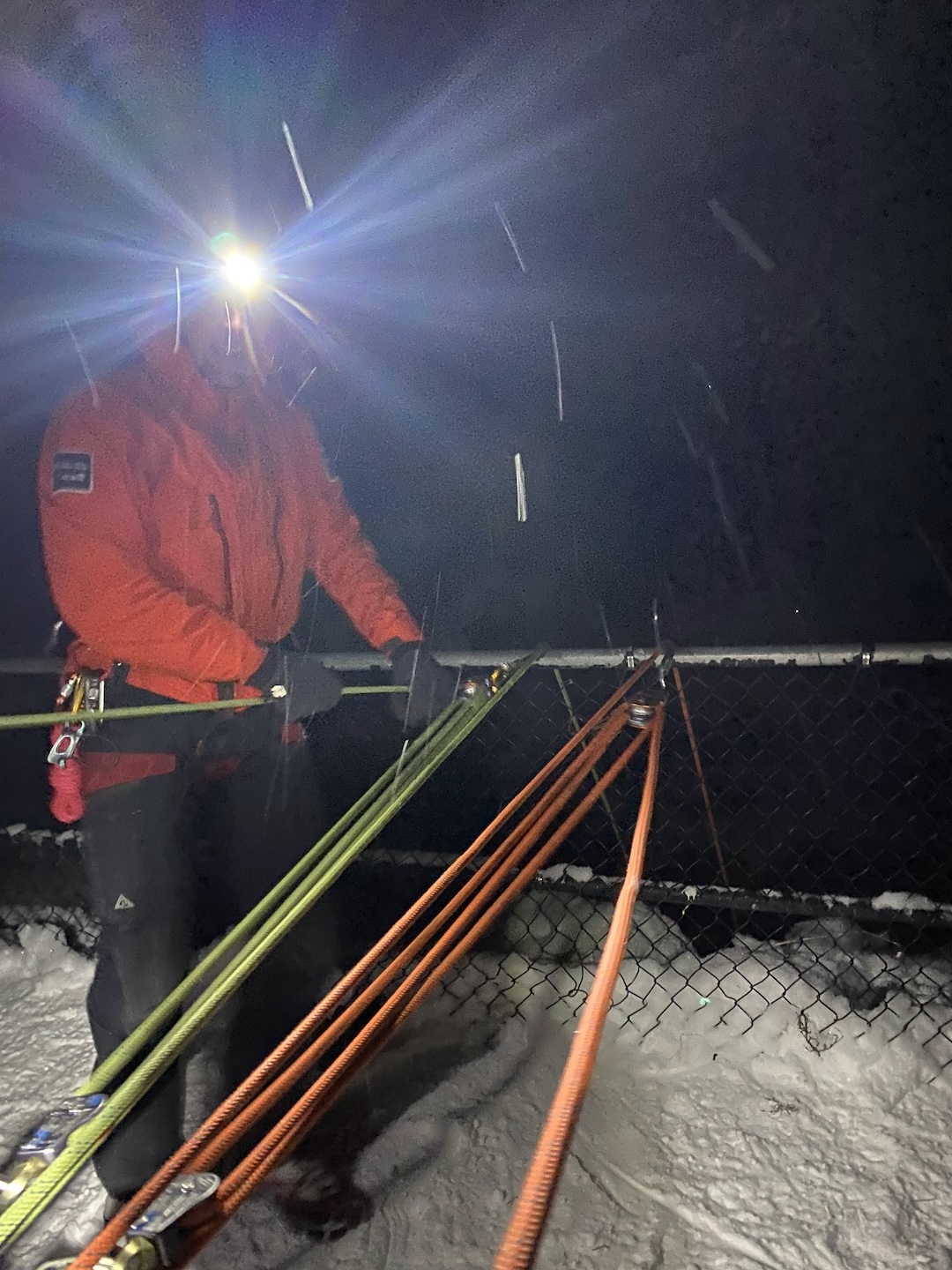Stranded — Unable to Climb Out of Canyon
Canada, British Columbia, Kootenay National Park, Marble Canyon

On December 17, a group of five climbers decided to climb at Marble Canyon, a popular winter cragging area. All were relatively new to ice climbing. Access to Marble Canyon is somewhat unusual, as climbers must rappel into the canyon and climb out. It is a committing venue despite a short approach and lack of avalanche exposure. There is no walk out. There is also no cell service, and satellite communication devices struggle to function in the deep, narrow canyon.
One of the climbers was more experienced than the others and felt comfortable taking the group to the area. The route chosen was quite difficult (40 meters, WI5). They lowered themselves in and attempted to climb out. The route was in difficult shape, with the bottom barely touching down. Due to the difficulty and their lack of experience, none were able to climb out. Their top-ropes started to freeze in place, making the situation more difficult. Eventually, the more experienced group member was able to ascend a rope using Jumars. This climber initiated an SOS on their inReach.
Parks Canada received the SOS at 4:45 p.m. The initial call created some confusion because the caller provided no details about the nature of the emergency. The SAR team also received two separate iPhone satellite SOS messages from the same area at the same time. None of the stranded climbers responded when asked for more information. By 5 p.m., however, the rescue team had gathered enough information to determine the required response. A team was on scene by 6:30 p.m. They lowered a rescuer and then, one by one, hauled out the four stranded climbers. There were no injuries.
ANALYSIS
This was a group of beginner ice climbers who chose an objective that was too difficult for them. The group had only recently met and they were unfamiliar with each other’s experience. After the incident, it was apparent that several members felt uncomfortable descending into the canyon but continued because they felt “it would be okay.” It is possible that the most experienced member was overconfident. Yet it is also the responsibility of every climber to speak up when they don’t feel comfortable. Know what you are getting into before you go. Some common questions are:
• How difficult is the climbing?
• Is it committing?
• What if we can’t do it?
• Who has the communication device and do they know how to use it?
• How do you call for help if needed?
• Do I have the skills to be there? If not, does the group have the skills?
• Do I trust my partners to be responsible for my safety?
Marble Canyon is often in difficult climbing shape. Experienced parties often top-rope routes by lowering in the climber with the belayer at the top. This allows inspection of the route on the way down, and the climber can stop if the bottom isn’t formed or looks too difficult. This system also allows for an easy haul system, if necessary.
If you trigger an SOS with a satellite communication device with two-way messaging, please monitor the device. This helps rescuers to respond appropriately and safely. In this case, the climbers were not familiar with their devices and were unaware they had been receiving messages. (Source: Parks Canada.)

